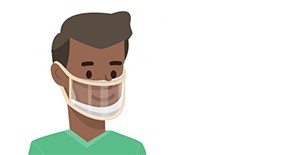Frequently asked questions
If you or your family member are at high risk for severe illness, wear a well-fitted facemask or respirator, such as an N95, KN95/KFN94 or surgical mask (in order of protection), in indoor spaces. Respirators, including N95, KN95 and KF94, or a surgical mask provide greater protection than a cloth face covering. Note: UW employees that voluntarily wear respirators must receive this advisory information. You may also want to speak to your healthcare provider when making these decisions.
UW Human Resources provides information about individual accommodations for individuals at high risk for severe illness. Visit the UWHR website or contact your HR coordinator or AHR business partner.
We understand there are individuals who may not be comfortable with others around them not wearing masks. If this is the case for you, consider wearing a high quality well-fitted facemask or respirator, such as an N95, KN95/KFN94 or surgical mask (in order of protection).
Note: UW personnel who voluntarily wear respirators must receive advisory information.
1. Choose a well-fitted mask with greater protection than a cloth face covering.
Respirators, including N95, KN95 and KF94, and surgical masks provide greater protection than a cloth face covering. Note: UW employees that voluntarily wear respirators must receive this advisory information.
2. Make sure your mask fits snugly against your face.
Gaps can let air with respiratory droplets leak in and out around the edges of the mask.
- Use toggles or a knotting and tucking technique with medical/surgical masks to ensure a good fit.
- Using a mask fitter or brace over a disposable medical/surgical mask or a cloth mask can help prevent air from leaking around the edges of the mask.
- Check for gaps by cupping your hands around the outside edges of the mask. Make sure no air is flowing from the area near your eyes or from the sides of the mask. If the mask has a good fit, you may be able to see the mask material move in and out with each breath.
